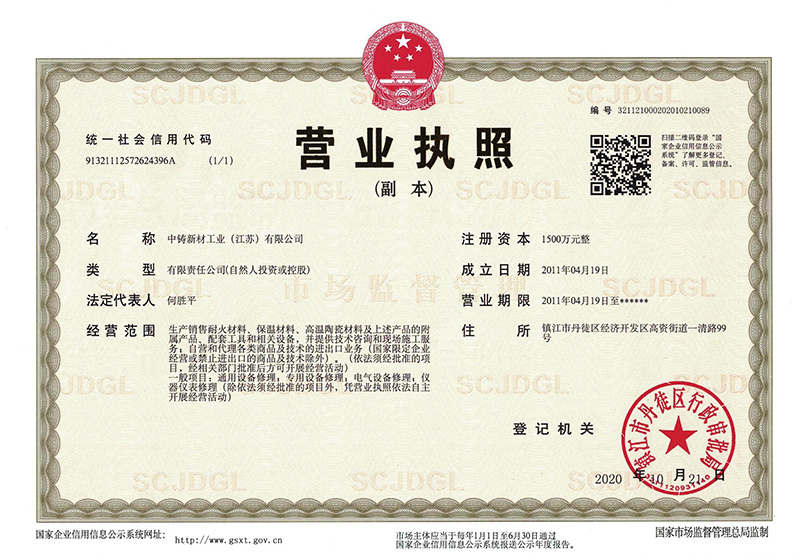News
SINO-FOUNDRY—professional refractory manufacturer
Foundry Refractory: Ensuring Longevity and Safety in Buildings
2025-07-26
Foundry Refractory: Ensuring Longevity and Safety in Buildings Table of Contents Introduction to Foundry Refractory Materials What Are Refractory Materials? The Importance of Refractory Materials in Construction Types of Refractory Materials Acidic Refractories Basic Refractories Neutral Refractories Applications of Re
Foundry Refractory: Ensuring Longevity and Safety in Buildings
Table of Contents
- Introduction to Foundry Refractory Materials
- What Are Refractory Materials?
- The Importance of Refractory Materials in Construction
- Types of Refractory Materials
- Applications of Refractory Materials in Buildings
- Benefits of Using Refractory Materials
- Installation and Maintenance of Refractory Materials
- Future Trends in Refractory Materials
- FAQs About Foundry Refractory Materials
- Conclusion
Introduction to Foundry Refractory Materials
In the realm of construction and architectural design, the significance of **foundry refractory materials** cannot be overstated. These materials are vital for various structural applications, ensuring both **longevity** and **safety** in buildings. As the industry evolves, understanding the nuances of these materials empowers builders, architects, and engineers to make informed decisions.
What Are Refractory Materials?
Refractory materials are specially designed to withstand high temperatures, corrosion, and chemical wear. Typically composed of materials such as alumina, silica, and magnesia, they maintain their structural integrity even under extreme conditions. Their primary role is to provide thermal insulation and protect underlying structures from heat and other damaging elements.
The Importance of Refractory Materials in Construction
The role of refractory materials in construction extends beyond mere heat resistance. They contribute to **fire safety**, energy efficiency, and overall durability of buildings. In environments exposed to high temperatures, such as industrial facilities and kitchens, the use of refractory materials is crucial. Additionally, they play a significant role in **passive fire protection**, thus safeguarding lives and property.
Types of Refractory Materials
Understanding the different types of refractory materials is essential for selecting the appropriate product for specific applications.
Acidic Refractories
Acidic refractories are primarily composed of silica and are resistant to acidic environments. They are ideal for applications that involve **acidic slags** and gases, making them suitable for use in furnaces and kilns.
Basic Refractories
Basic refractories are made from materials like magnesia and dolomite. They are effective in basic environments and are resistant to alkaline substances. Their high melting points make them suitable for use in steelmaking and glass industries.
Neutral Refractories
Neutral refractories, which include materials like chromite and alumina, are less reactive in both acidic and basic conditions. They serve as versatile options for various applications where chemical resistance is a priority.
Applications of Refractory Materials in Buildings
Refractory materials are utilized in a variety of applications within the construction industry. Their versatility allows them to be used in:
- **Industrial Furnaces**: Providing heat resistance and protection against thermal shock.
- **Chimneys and Flues**: Ensuring safe venting of gases while withstanding high temperatures.
- **Fireplaces**: Enhancing aesthetics while offering safety and functionality.
- **Pizza Ovens**: Ensuring efficient heat retention and distribution for cooking.
Benefits of Using Refractory Materials
Incorporating refractory materials in construction offers several advantages:
- **Enhanced Fire Resistance**: Reduces the risk of fire hazards.
- **Improved Energy Efficiency**: Minimizes heat loss, leading to lower energy costs.
- **Longer Lifespan**: Increases the durability of structures exposed to extreme conditions.
- **Versatility**: Suitable for various applications across multiple industries.
Installation and Maintenance of Refractory Materials
Proper installation and maintenance are crucial for the longevity of refractory materials. In this section, we will discuss best practices to ensure optimal performance.
Installation Tips
- **Surface Preparation**: Ensure surfaces are clean and free from contaminants.
- **Correct Material Selection**: Choose the right type of refractory material based on the specific needs of the application.
- **Professional Assistance**: Engage experts for installation to minimize errors.
Maintenance Guidelines
- **Regular Inspections**: Conduct routine checks to identify wear and tear.
- **Prompt Repairs**: Address damages immediately to prevent further degradation.
- **Proper Cleaning**: Use appropriate cleaning methods to maintain integrity.
Future Trends in Refractory Materials
The future of refractory materials is poised for innovation, driven by technological advancements and environmental considerations. Emerging trends include:
- **Sustainable Materials**: Increased focus on eco-friendly refractory options to reduce environmental impact.
- **Nanotechnology**: The use of nanomaterials for enhanced performance and durability.
- **Smart Refractories**: Development of materials that can monitor their condition and alert users to potential issues.
FAQs About Foundry Refractory Materials
1. What are the main types of refractory materials?
The main types include acidic, basic, and neutral refractories, each suited for specific applications and environments.
2. How do refractory materials contribute to fire safety?
Refractory materials resist high temperatures and prevent the spread of fire, providing crucial protection in buildings.
3. Can refractory materials be recycled?
Yes, many refractory materials can be recycled, depending on their composition and condition.
4. What factors influence the selection of refractory materials?
Factors include temperature resistance, chemical exposure, mechanical strength, and application requirements.
5. How often should refractory materials be inspected?
Regular inspections should occur at least once a year, or more frequently in high-stress applications.
Conclusion
In summary, **foundry refractory materials** play an indispensable role in ensuring the **longevity** and **safety** of buildings. Their unique properties make them essential for various applications, from industrial furnaces to residential fireplaces. As the construction industry continues to evolve, understanding and utilizing these materials effectively is crucial for architects, builders, and engineers. By investing in the right refractory materials and adhering to best practices for installation and maintenance, stakeholders can save costs, improve safety, and enhance the overall quality of their structures.
Related News
2024-11-05
Zhongzhu New Materials Industry sincerely invites you to participate in the 24th International Forum and Exhibition on Recycled Metals.

WeChat public account

View mobile website
Address : No. 99, Yiqing Road, Gaozi Street, EconomicDevelopment Zone, Dantu District, Zhenjiang City
Fax : +86-511-85683066
E-mail : sales@sfr168.com
Website : https://www.sfr168.com
Copyright©2023 Sino-Foundry Refractory(Jiangsu) Co.,Ltd. Powered by:www.300.cn
Copyright©2023 Sino-Foundry Refractory(Jiangsu) Co.,Ltd.
IPV6 | SEO | Cloud Information



